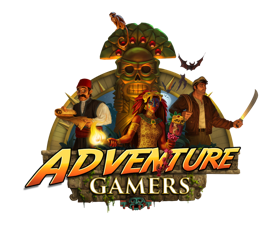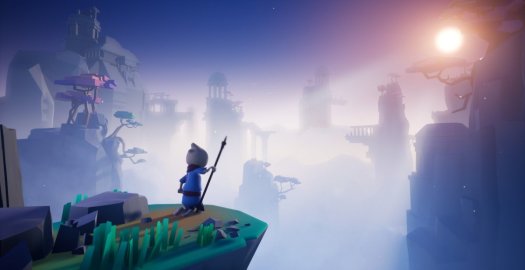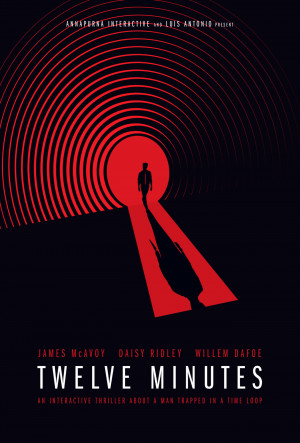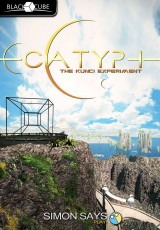Review for Omno
The irony of the “adventure” genre is that so few games end up resembling the dictionary definition of the word. Not so with Omno, a gorgeous 3D environmental puzzler that will leave you feeling like you’ve shared every step (or air current) taken on the breathtaking journey of its silent protagonist and his flying animal companion. You’ll leap, you’ll climb, you’ll ski, you’ll glide through a variety of stunning biomes, each with their own puzzles to solve and menageries of unique creatures to catalogue. It’s a physical game, to be sure, and a degree of dexterity is needed, yet it’s not an exhausting one. Indeed, it’s one of the most serene virtual experiences I’ve had in recent memory, as befits the nature of its spiritual pilgrimage to literal enlightenment. If it had just as much substance as style, I’d be lauding it as a masterpiece. Even so, it’s one that all adventure gamers with any tolerance of action owe it to themselves to try.
The game stars a young humanoid boy with no discernible facial features except for two light slits for eyes. The only thing he carries with him is a staff, and though he awakens with no memory, you’ll come to understand that he belongs to a class of staffbearers driven to “follow the path to the light” in search of a better world and a truer state of being. This is pretty much the sum total of the story in Omno, which is ostensibly about reaching your destination but is really all about enjoying the richness of the journey along the way. The only narrative revelations come in the form of scattered relics left behind by a previous traveler making the same trek as you, who recounted his experiences in thoughtful yet somewhat cryptic notes. They’re nicely written in a New Age-y sort of way, though they’re optional and you could easily skip them entirely without really missing much.
Accompanying you much of the way is a cute little critter that looks something like a flying green jelly bean that’s sprouted four legs, long ears and a big bushy tail. At first the animal is timid around you, zipping off whenever you get too close. This is to your advantage, however, as it’ll reappear whenever you get near to one of your goals throughout the game’s eleven levels spread across five distinct worlds, serving as a sort of hint guide without ever overtly feeling like one. As you progress, however, the creature seems to become weaker and sicker upon your arrival in each new zone, while also warming to your presence and even allowing you to interact with it at times. No word is ever spoken between you (or at all), and yet you’ll come to feel fond of your charming animal guide and protective of its well-being, paving the way for a sweetly poignant ending.
Together the two of you will venture across a variety of stunningly beautiful landscapes, from swampy marshlands to purple-tinged prehistoric rocky plateaus, icy blue frozen lakes and snow-covered valleys, orange-hued sun-baked mesas and desert canyons, and floating islands in the sky. There is evidence of a once-great civilization everywhere, but only ruins, a few murals, and some functional devices now remain. The aesthetic is more stylized than realistic, with limited texture and lots of geometric shapes and angular features: vines climbing a rock surface are simple green squares, rectangular blades of grass stick up like paper, and some trees look like irregularly stacked Lego. And yet the effect is lovely, with ever-changing pastel palettes to suit each new environment, and a soft haze in the background that gives everything a kind of warm glow, accentuated nicely by the sun radiating its light and casting shadows everywhere you go.
Populating this diverse terrain is an impressive array of wildlife, many based on variations of our own animals and others even more imaginative. Two-legged frogs and trillium-headed green flamingoes will seem instantly familiar, and later you’ll encounter such fantastical fauna as aerial jellyfish and numerous dinosaur mutations, from pterosaurs to lumbering brachiosaurs and everything in between. Some creatures seem to be more geologic than alive until roused, like frozen snails and little pedestals that twirl into the sky before settling back down to earth, while “skipguins” will playfully tag along on their bellies as you skim the surface (more on that skimming bit later). And that’s not even mentioning the behemoths that let you climb on and carry you from one world to the next in dazzling cutscenes that feel utterly magical.
Each biome has its own collection of critters that are catalogued when first encountered, totaling over forty all told. Interacting with them the first time is a delight, but the compendium itself is entirely underwhelming, offering only a name and brief text description. You can keep engaging with the animals in order to generate energy, but this is by far the most undercooked element of Omno. Once bumped into or activated (with a simple button press), every creature will shed a few light crystals that you absorb, eventually triggering a short burst of turbo power. The added speed this enables is so brief it’s practically useless, however, and the only real value to having enough light energy is to activate a particular monolith found in each level. If you fall from too great a height, you’ll land with a thud and disperse a few crystals of your own, but these are instantly re-absorbed, making it entirely inconsequential. (You can die from drowning or falling from the sky, but are instantly respawned at the nearest checkpoint, which are physical markers that highlight when crossed.)
Energy isn’t the only thing you’ll need to collect in your travels. Each stage requires you to find three light orbs that will activate the mechanism leading to the exit. There are more than three orbs available in even the earliest of levels, increasing further still in the later ones, so you can pick and choose which to pursue and in which order you like. A meditation point in each area will endow your staff with the ability to project a radar-like display showing the direction of all the orbs (though not the relics). If you rush, you could easily breeze through the game in just a couple hours, but if you want to reach 100% in each level (collecting all orbs and narrative relics), you’ll have to work harder for it and will probably take twice as long. There’s no reward for doing so outside of achievements, and while you can replay any world once finished, this will overwrite your current progress and there’s no way to tell from the menu which still have collectibles remaining if you want to go back and chase down what you missed the first time around.
To get those precious orbs, you’ll need to combine puzzle-solving acuity with platforming reflexes, although for the most part the obstacles aren’t too taxing. Typically an orb will be situated too high or too far to reach, requiring a more strategic approach. You’ll make use of both natural and man-made elements to succeed, from gushing air pockets and boost-giving animals to light-powered levers and special glyphs. The latter sometimes activate temporary functions, such as short-lived pedestals to jump across in time, which may take a couple tries but aren’t too difficult once you know what you’re supposed to do. Rarely is there any real danger, though one orb can only be attained by outmaneuvering a stationary laser sentry, which is sure to take some trial and error but lets you start over again instantly when zapped.
If your immediate reaction to all the acrobatics is “ugh,” rest assured that it really doesn’t feel like platforming, it feels like exploring. Omno can be played with the keyboard just fine (with the mouse controlling the camera), but I found it far more natural to sit back and relax with a gamepad. You’ll start out only able to jog, jump, push energized blocks, and climb ledges the protagonist grabs onto, but with each new world comes a brand new ability. Before long you’ll be performing midair dashes, riding your staff like a snowboard across any descending or flat-ish surface, gliding through the air, and even teleporting great distances to predetermined destinations. It all feels very liberating, especially as the worlds increase in size, and the animation is smooth and spectacular. It’s not quite like skiing the slopes yourself, but it’s the next best thing and works on sand and grass as well as snow! You’ll even get to ride air currents through skybound obstacle courses, which is always a thrill.
The best puzzles, of course, make use of these abilities in different combinations, and such challenges are usually saved for last in each level. One may task you with traversing unpassable chasms using limited smaller orbs to power up switches for moving platforms or air vents, while another may require you to repeat light patterns by landing on the right pedestals without ever touching the ground between them. Some demand more of a deft hand than others, like when you must alternate between floating and teleporting while still in the air before markers disappear, but it’s never a matter of button-mashing. Keeping your cool is really the secret, rather than frantically moving as fast as you can.
Other puzzles involve turning three columns to correctly match symbols, but these are easy enough once you find the clues nearby. Only one grid-based puzzle feels out of place, being far more abstract than any of the others and making little use of your physical abilities. Its solution does make logical sense, but the clues are vague and it completely resets to a randomized pattern if you fail. Even after I understood what was needed, it gave my spatial cognition a run for its money. Nevertheless, this is the only outlier in terms of difficulty, as for the most part Omno is able to find the sweet spot between just challenging enough without becoming frustrating.
Accompanying all this action is a very sweet, almost ethereal soundtrack blending tonal synths with live instruments (violins, piano) and gently operatic female vocals. It rarely changes to suit a particular circumstance outside of the mesmerizing trips between levels, but for the most part this is a leisurely experience and the score makes for a very pleasant backdrop without ever being intrusive. Sound effects are limited beyond the changing pitter-patter of your own feet on different surfaces, but there’s enough ambient atmosphere to make these worlds come alive. Some tweets and croaks will make you feel right at home, while other chitters and wails serve as reminders that you’re not at home here at all. Your animal companion is largely silent, but will occasionally chip in with some endearing coos.
What I’ve avoided mentioning so far is that outside of composer Benedict Nichols, Omno is the work of a single person, Jonas Manke (and a whole lot of Kickstarter supporters). Lest anyone mistake my praise as being conditional “for a solo developer,” this is a game so polished and so enjoyable that it puts many of its higher-budgeted, bigger-staffed contemporaries to shame. The gameplay, though fun while it lasts, is a little on the slight side, and its barely-there narrative even slighter. But the experience is so charming, so stylish, so immersive, I’d have loved to spend far longer playing through even more worlds. (Where’s the lava, forest and water levels, Jonas?) Whether from one man or many, this is a delightful game I strongly recommend to anyone who appreciates a little actual adventure, and I’m glad to have this platform to help spread the word.































